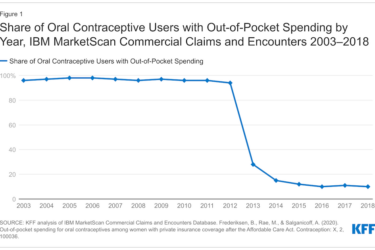
Dozens of journalists have reported how 38 states and the District of Columbia have increased eligibility in their Medicaid programs under the Affordable Care Act (ACA). Last year, April Simpson, a racial equity reporter for the Center for Public Integrity, showed one of the best ways to cover this story.
In a new tip sheet, Simpson took the unusual step of covering Medicaid expansion by comparing access to health care for residents in states that have expanded Medicaid eligibility versus the lack of access to care for their counterparts in neighboring non-expansion states.
Her work could serve as a model for journalists covering the complex issues in the 12 non-expansion states: Alabama, Florida, Georgia, Kansas, Mississippi, North Carolina, South Carolina, South Dakota, Tennessee, Texas, Wisconsin and Wyoming. Also, Simpson’s articles could serve as a template for journalists in the expansion states adjacent to those that didn’t expand their Medicaid programs.
One of the angles to pursue in covering the Medicaid expansion story is the effect of the American Rescue Plan Act (ARPA), which Congress passed last year, and which included increased funds for the 12 holdout states. An estimated 2.2 million uninsured Americans would benefit from Medicaid expansion in those 12 states: Alabama, Florida, Georgia, Kansas, Mississippi, North Carolina, South Carolina, South Dakota, Tennessee, Texas, Wisconsin and Wyoming, according to research from the Kaiser Family Foundation. By covering almost 75.8 million Americans, Medicaid is the nation’s largest health insurer.
In late February, the federal Department of Health and Human Services reported that the 12 non-expansion states have the highest percentages of uninsured adults and children who are Black. If those 12 states loosened the restrictions they have imposed on Medicaid eligibility, some 957,000 Black Americans without health insurance would become eligible for Medicaid coverage, HHS researchers showed in the report published Tuesday, Feb. 22, “Health Insurance Coverage and Access to Care Among Black Americans: Recent Trends and Key Challenges.” Note that 957,000 is 43.5% of the 2.2 million who currently lack health insurance in the 12 holdout states.
The new report shows the significance of the temporary financial incentives under ARPA that are designed to encourage lawmakers in the holdout states to expand Medicaid enrollment, as KFF reported last year. Under the ACA, the 38 states and the District of Columbia get federal funding to cover 90% of the costs of covering those new enrollees. But then under ARPA, the 12 states could get a 5-percentage point increase in federal Medicaid funding for two years after the expansion takes effect, KFF reported. The 5% increase also goes to Missouri and Oklahoma, which have recently implemented expansion plans. “The increase in the regular matching rate is estimated to more than offset the increased state costs of expansion in these states for the first two years,” KFF added.
These facts show the importance of Simpson’s reporting on Medicaid expansion along the eastern border of Minnesota (an expansion state) and along the western border of Wisconsin, which has not expanded Medicaid eligibility. There, she reported on the Lake Superior Community Health Center, a federally qualified health center that provides medical, dental, substance use and behavioral health care services in Duluth, Minn., and in Superior, Wisconsin. The center treats all patients in both states, but the locations in Superior have fewer financial resources and poorer health care access for low-income residents, Simpson wrote.
Last fall, Simpson followed a similar model to compare health care in non-expansion Mississippi to health care in neighboring Louisiana, which expanded its Medicaid program in 2016. She focused on two demographically similar counties along the Mississippi River: Jefferson County, Mississippi, and Madison Parish, Louisiana.
As she illustrated, increasing eligibility for Medicaid enrollment helps hospitals in those states while some hospitals struggle in non-expansion states, particularly in rural areas. In 2016, for example, Louisiana hospitals spent 8.9% of their operating expenses on debt after uninsured patients couldn’t pay for their care and that percentage declined to 5.5% by 2020. Over those same years, the percentage of bad debt that Mississippi hospitals reported remained about the same at 7%, Simpson wrote.









